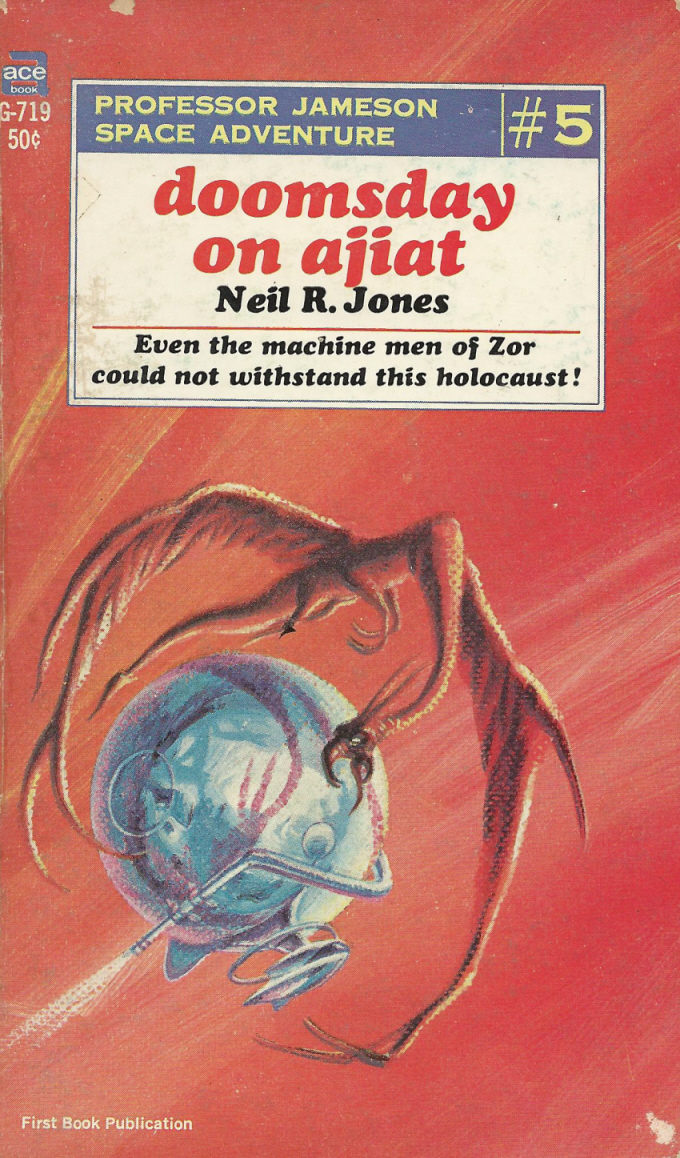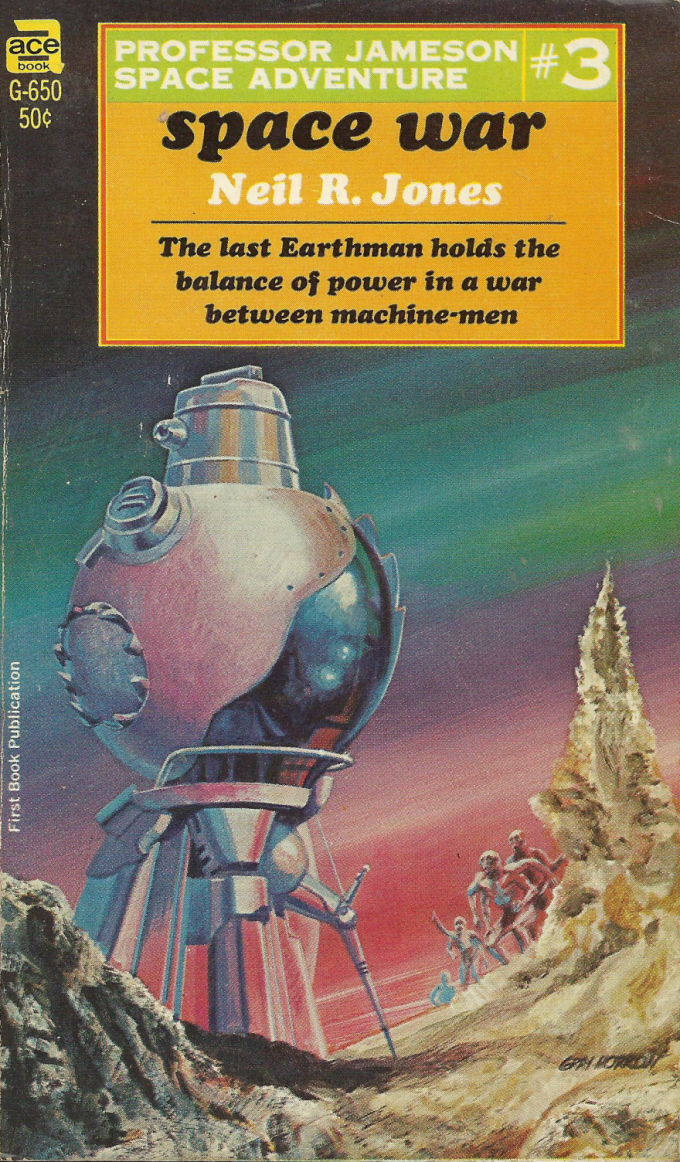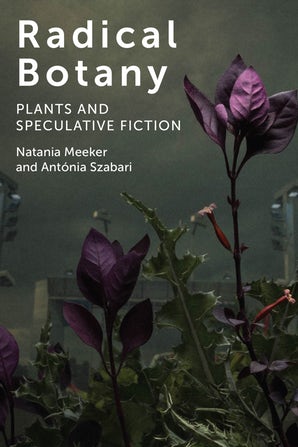“Within the interior of the space traveler, queer creatures of metal labored at the controls of the space flyer which juggernauted on its way towards the far-off solar luminary. Rapidly it crossed the orbits of Neptune and Uranus and headed sunward. The bodies of these queer creatures were square blocks of a metal closely resembling steel, while for appendages, the metal cube was upheld by four jointed legs capable of movement. A set of six tentacles, all metal, like the rest of the body, curved outward from the upper half of the cubic body. Surmounting it was a queer-shaped head rising to a peak in the center and equipped with a circle of eyes all the way around the head. The creatures, with their mechanical eyes equipped with metal shutters, could see in all directions. A single eye pointed directly upward, being situated in the space of the peaked head, resting in a slight depression of the cranium.” (“The Jameson Satellite” by Neil R. Jones)
Goodreads description of Neil R. Jones
Neil Ronald Jones (29 May 1909 – 15 February 1988) was an American author who worked for the state of New York. Not prolific, and little remembered today, Jones was ground–breaking in science fiction. His first story, “The Death’s Head Meteor”, was published in Air Wonder Stories in 1930, recording the first use of “astronaut”. He also pioneered cyborg and robotic characters, and is credited with inspiring the modern idea of Cryonics. Most of his stories fit into a “future history” like that of Robert A. Heinlein or Cordwainer Smith, well before either of them used this convention in their fiction.
Rating not even a cover mention, the first installment of Jones’ most popular creation, “The Jameson Satellite”, appeared in the July 1931 issue of Amazing Stories. The hero was Professor Jameson, the last Earthman, who became immortal through the science of the Zoromes. Jameson was obsessed with the idea of perfectly preserving his body after death and succeeded by having it launched into space in a small capsule. Jameson’s body survived for 40,000,000 years, where it was found orbiting a dead planet Earth by a passing Zorome exploration ship. The Zoromes, or machine men as they sometimes called themselves, were cyborgs. They came from a race of biological beings who had achieved immortality by transferring their brains to machine bodies. They occasionally assisted members of other races with this transition (i.e. the Tri-Peds and the Mumes), allowing others to become Zoromes and join them on their expeditions, which sometimes lasted hundreds of years. So, much like the Borg of the Star Trek series, a Zorome crew could be made up of assimilated members of many different biological species. The Zoromes discovered that Jameson’s body had been so well preserved that they were able to repair his brain, incorporate it into a Zorome machine body and restart it. The professor joined their crew and, over the course of the series, participated in many adventures, even visiting Zor, the Zorome homeworld, where he met biological Zoromes. The professor eventually rose to command his own crew of machine men on a new Zorome exploration ship. “The Jameson Satellite” proved so popular with readers that later installments in Amazing Stories got not only cover mentions but the cover artwork.
Being cryopreserved and revived is an idea that would recur in SF, such as in Gene Roddenberry’s Genesis II. One young science fiction fan who read The Jameson Satellite and drew inspiration from the idea of cryonics was Robert Ettinger, who became known as the father of cryonics. The Zoromes are also credited by Isaac Asimov as one of the inspirations behind the robots of his Robot series.
Masamune Shirow paid homage to Jones in his cyborg-populated Ghost in the Shell saga by including a no-frills brain-in-a-box design, even naming them Jameson-type cyborgs.
Jameson (or 21MM392, as he was known to his fellow metal beings) was the subject of twenty-one stories between 1931 and 1951, when Jones stopped writing, with nine stories still unpublished. In the late 1960s, Ace Books editor Donald A. Wollheim compiled five collections, comprising sixteen of these, including two previously unpublished. In all there were thirty Jameson stories written (twenty four eventually saw publication, six remain unpublished), and twenty-two unrelated pieces.














